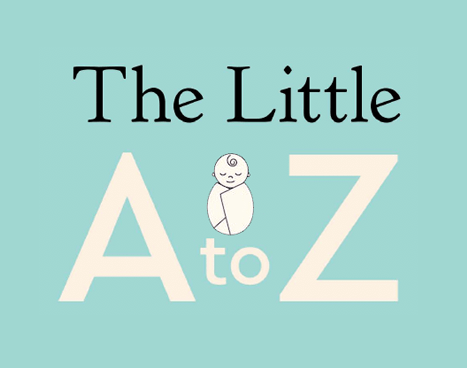"I Quit!"
Why women leave the workforce in greater numbers than men

Being a working parent is a constant game of Whack-A-Mole. Solve one small problem, another one crops up. Keeping the “gophers” at bay is helped a lot through consistent planning and scheduling, and by regular communication in the household around who does what when it comes to child and other responsibilities. As I wrote in the
The Little A to Z, communication, organization and adaptability are all essential skills a parent has to have to survive modern working life.
Like all you readers, I’ve navigated some pretty big developmental milestones with our son so far and still managed to keep working. I’ve taken maternity leave, gone back to work part-time until he was a toddler, had a nanny, had house help and done a lot of co-parenting with my husband. But it wasn’t until the early part of this summer that I started more seriously entertaining that two syllable phrase, “I quit.”
The trigger of my episode was an inadequate summer childcare plan for Clyde. I was really at the end of my scheduling rope. As I sat around the pool for Clyde’s summer swim team, I picked up bits and pieces of conversation amongst the other mothers:
“Oh yes when COVID hit, it made sense for me to be the one to quit.”
“I just got tired of unreliable nannies and babysitters, and thought it would be easier to just give up work.”
“My husband earns more so we decided I should stay home.”
Their passing remarks, alongside my own thoughts, got me thinking that day on the pool deck:
“Why do women quit the workforce?”
I mean really Q-U-I-T. Like wake-up-one-morning-and-decide-to-hand-in-their-resignation-letter type of quit.
Today’s newsletter explores this question by first looking at the data on gender participation in the workforce to understand the numbers and more precisely at which point in time women are most likely to drop out. Then we are going to look at the confluence of factors that leads to that resignation. Third we will briefly explore whether things have changed significantly since COVID. And fourth we will then look at some solutions. Hang in there. It’s a bit of a longer piece this week!
Women in the Workforce: Is there a participation problem?
Let’s start with the data on workforce participation.
According to the US Department of Labor, in 1950 only 37% of women ages 25-54 participated in the labor force. The number rose rapidly in the decades that followed, climbing to 74% by 1990. But then progress stopped. Today, still only 74% of women are active in the U.S. workforce. As a developed nation, the US is trailing far behind many other countries when it comes to female labor participation: ranked 27th out of 37 developed countries, according to the Organization of Economic Cooperation and Development (OECD).
More worrying perhaps are the leadership numbers: that today only 25% of Heads of S&P500 companies are women and that only 20% of board members of these same companies are women. These C Suite numbers are important for two reasons. First, they show that the gender gap increases significantly as men and women pursue their careers over time. Second, the numbers point to shrinking diversity as hierarchy increases in workplaces which creates a vicious circle when it comes to retaining female talent: the make-up of an organisation’s leadership has a direct impact on the types of diversity and workforce development policies it adopts and monitors.
Another way to look at the problem of gender participation in workplaces is through the lens of attrition. Here too the statistics suggest that women are more likely than men ‘to quit’ in larger segments as their careers progress. Consider for instance that general workforce attrition rates are 31% for women to 24% for men; but by the time you reach the C Suite the rate triples: 24% to 7%.
Having Children Impacts Women’s Participation More Significantly than Men
Today women and men continue to join the workforce in pretty equal numbers. Having children is where the drop-off starts. Take the statistics from Cheryl Sandberg’s well-quoted book,
Lean In, which found that "43% of highly qualified women with children are leaving careers or off-ramping for a period of time…” But more revealing perhaps is what happens at re-entry after childbirth where she states that, “Only 74% of professional women will rejoin the workforce in any capacity, and 40% will return to full time jobs."
As concerns the majority of people who read this newsletter, I thought I’d share some numbers I came across recently that I hadn’t registered before. According to
Liz Peek
in a 2013 Fiscal Times opinion piece, evidence shows that after having children, highly educated women actually drop out of the workforce at higher rates than less educated women. Intriguing is that only 35 percent of women who have earned MBAs after getting a bachelor’s degree from a top school are working full time, compared to 66 percent from second-tier schools.
In summary, the data tell us that women’s labor participation curve starts to drop after having children. That even if women re-enter the workforce it is not often at full capacity. That highly educated women may in fact be making up a bigger part of resignations than we thought. And that all this leads to less female leadership in the C-Suite and boardrooms.
So what does the pathway to quitting look like?
Quitting in Not Linear
As
Silvia Ann Hewlett concluded in her research and book,
Off Ramping and On Ramping, quitting the workforce is a confluence of push and pull factors which forms a complicated picture.
Essentially there are numerous underlying conditions that create, over time, exhaustion, tensions, irritability and just a general sense of inability to manage the day-to-day effectively. This cauldron in which a well-performing person is stewing in (sorry we listened to the Black Cauldron this summer on our road trip!) is then tipped over by a trigger event: an elderly parent or child who becomes drastically ill. A partner who takes on a new job or responsibility and needs the other one to hold the fort for a bit. Inflation. A global pandemic (ahem…).
It’s important to call out these underlying conditions because ultimately if we can recognize and manage all the underlying stuff, it puts our physical and mental well-being in a much better place to manage the triggers that inevitably come our way over the course of life.
The underlying conditions which weaken our overall well-being and resilience form around two arenas, briefly detailed out here:
1. Work environment: here is where decades of feminist, gender and business research have already told us of the challenges for women in particular to pursue a career and be a parent at the same time. Factors that create stress and anxiety for working parents have to do with the absence of flex-work and family-oriented policies (including parental leave) in the workplace. However in many instances these policies may in fact exist but more importantly the leadership culture does not reinforce these policies through practice. So leading by example can be as a powerful as the policies themselves. Beyond flex work and other types of family-friendly policies, the leading driver for women in particular to contemplate leaving their workplace (and the workforce writ-large) is harassment and discrimination. General career advancement dissatisfaction can also (over time) create all the right conditions for someone to be ready to quit.
Allison Lewis recently wrote about a survey conducted by LinkedIn which found that, “Women leave companies because of a ‘concern for the lack of advancement opportunity,’ followed by their ‘dissatisfaction with senior leadership’ and their ‘dissatisfaction with the work environment/culture.’ " Super profound findings when we think back to the high attrition rates in female leadership positions, right??!! Here we see the consequences clearly.
2. Home environment: these are factors we all know so well—division of household labor and responsibilities and the extent to which you have a supportive partner for your career. I was struck however by the following statistic (which I can't find the reference for anymore, sorry):
"Working women are twice as likely as their male counterparts to run the household, three times more likely to manage their children’s schedules, and eight times more likely to require time off to care for a sick child. They’re also three times as likely to volunteer for school or community activities.”
COVID-19 and Women’s Workforce Participation
Has COVID made it worse?
Deloitte Global thinks so. In a
recent survey of 5,000 women across 10 countries, nearly 80% of women say their workloads have increased because of the pandemic, while 66% of women report having more responsibilities at home. 23% of women surveyed reported considering quitting. The reason? Work-life balance.
Specifically in the United States, as the pandemic erupted in the spring of 2020, roughly 3.5 million mothers with school-age children either lost jobs, took leaves of absence or left the labor market altogether, according to an analysis by the Census Bureau. By the end of 2021, that number had increased to 5.4 million net jobs, according to research by the
National Women’s Law Center.
But is there a gender gap in drop-outs? According to a
survey conducted by YouGov for NextAdvisor, of over 1,000 U.S. adults with dependents under 18 in the household, since the pandemic 28% of women with kids under 18 in the household have temporarily or permanently left the workforce to become a primary caregiver to children, compared to 10% of men. Furthermore in that same survey, when those in households with two working parents were asked to imagine which parenting partner would be the preferred person to leave the workforce to become their children’s primary caregiver, 69% of women said they would likely be the one to leave work, compared to 31% of males.
A Deficit of Supportive Measures
Policymakers and employers had thought that once the schools re-opened the situation would improve. But even as the economy rebounds and some sectors face labor shortages, millions of women are continuing to stay home. Affordable and flexible child care is the key factor. But unfortunately this is not a new problem caused by COVID. Even prior to COVID, child care costs were the leading cause in female resignations, according to research conducted by
Janet Currie, a professor of economics and public affairs at Princeton University and co-director of the Program on Families and Children at the National Bureau of Economic Research.
Heidi Hartmann agrees that child care costs are a key sticking point but also points to stagnant wages. Indeed, between 1985 and 2011, average child care costs rose 70% for working moms, after adjusting for inflation, according to the U.S. Census. About 55% of families report spending at least $10,000 a year on child care. In fact, in two-parent, two-income households where one parent has considered leaving or has left the workforce to become a primary caregiver since the pandemic began, half (50%) say the cost of external child care played a significant role in the decision, according to the survey conducted for NextAdvisor. Meanwhile, wages have barely budged.
Compounded with a lack of universal paid parental leave (do need not be reminded that the United States remains the only major industrialized country in the world that doesn't mandate some sort of paid parental leave?),
Eden King sees lack of policy progress as discrimination. “Instead of opting out, women are being pushed out.” She continues,
“ “Opting out” isn’t the reason most women have left their jobs…The oft-used phrase perpetuates the idea that work is optional for women—that their income is secondary, or even extra, instead of a bedrock of support for children, spouses, and older parents. Instead, she said, insidious societal messages that women should be mothers and that mothers should put their families first are helping to keep women home.”
In effect, the pandemic really exposed just how fragile the infrastructure is that enables women to participate in the workforce. When that infrastructure broke down, we saw women leave the workforce in droves.
Impacts on Mental Health
The Great Resignation has had an impact on well-being. Many women now report feeling that they can find success in neither their work life nor their home life. Self-worth is being challenged. Work creates meaning and identity.
In a recent article for
Time, Dr. Colarco states that, “They [women] feel a deep sense of failure on all fronts and it’s just debilitating.” Even executive women — who have not quit or been laid off — are having a difficult time, adds Jocelyn Kung, a San Francisco-based executive coach to many female executives working in tech. Many of them are “doing more downshifting” and not pursuing challenging career opportunities to try to get through the demands outside of work.
“At the senior level, the women are more exhausted than the men for sure,” she adds.
The question facing employers now is when (if at all) will women come back?
What Can Be Done?
Don't quit!
According to
Arushi Sood Joshi, women face immense difficulties in finding a job once they’ve been out of the workforce. Combined with impacts on mental health and well-being, it would seem that quitting is not the optimal solution for women who genuinely want to work.
So if we take “Don’t Quit!” as our starting point, then what can be done?
If my experience this summer is anything to go by, the first step is to recognize you are in trouble. Don’t ignore the signs until it is too late. It took me a long time to process what I was feeling and to separate a range of issues to make sense of my own situation. It may take you a while, with lots of walks, meditation or talking with someone. But do invest the time to understanding why you want to leave your job. If after that reflection you realize that being at work is worth it for you, then most likely you need to start with some well-being repair.
Here are some suggested triage methods to tackle the immediate overwhelm:
-Do less at work: I’m trying to pare down my work program to just a few big chunks of projects or thought pieces that allow me to dive deep into intellectual problems and not be spread too thin.
-At work, take on less meetings, shorten meeting times (I’m trying out 30-45 mins now) and always keep those Fridays ‘meeting free.’
-Say “No” to new tasks, social events, or things that just create more work for you
-Take a personal day off once a month to just potter around your house, enjoy your neighborhood, clean out that closet, pamper yourself, read that research paper. Whatever it is, let it feed your soul and mind.
-At home, re-evaluate the division of tasks in your household. Fair Play has been a really good asset for us as a family. Other methods most likely exist. If you can afford it, and feel comfortable, hire some help once in a while to do chores, etc.
-Get off phones and social media if it is distracting and making you feel worse about your situation.
Once you’ve had a bit of time to breathe, some more medium-term strategies include:
-Take a “sabbatical” through your work so you can focus on one intellectual part of your job you love and get reacquainted with it. The sabbatical could be as little as one month, staying in town, just shedding all your other work for a period of time.
-Consider reducing your work hours for a while to re-calibrate
-Look at where in your portfolio you could identify fellow colleagues you could mentor to take over your role eventually
Now on a more forward looking front, a few innovative ideas I read about that start to restructure what ‘work’ looks like in favor of models that suit working parents (men and women alike) include:
-Project based work has proven a great way to get women back into the workforce after early childhood rearing. These are closed-end projects where a business gives clear deliverables and milestones. In the words of
Paulette Light in her article for The Atlantic, “If you want high-achieving mothers back in the workforce, don't give us an office and a work week filled with Facetime, give us something to get done and tell us when you need it by.”
In a similar vein, Booz Allen has been piloting an adjunct program which has a similar feel to it. It is on a project by project basis. Deadline oriented. Helps working parents re-enter the workforce and build networks. And it offers real career development.
In general, we do need better family-oriented policies. Everything from paid parental leave to equitable wages to workplace culture changes. If activism is for you, get involved with specific campaigns on issues you feel are close to your heart. Or perhaps you feel like moving the needle at your work is what inspires you. Staff Associations or Working Groups might be a place where you could raise the profile of specific issues you feel strongly about.
Lastly, model. I’ve always been a firm believer that whether through your life at home, in the community or at work, we owe it to ourselves and to future generations to lead by example. Whether through parenting groups or one-on-one conversations, or by mentoring young professionals in your organization, there are infinite ways in the day-to-day in which we can encourage and touch other working parents’ lives. There is no illusion that working and parenting is an easy task. But the self-worth that one can derive from contributing outside the home is worth, in my view, diligently fighting for.









